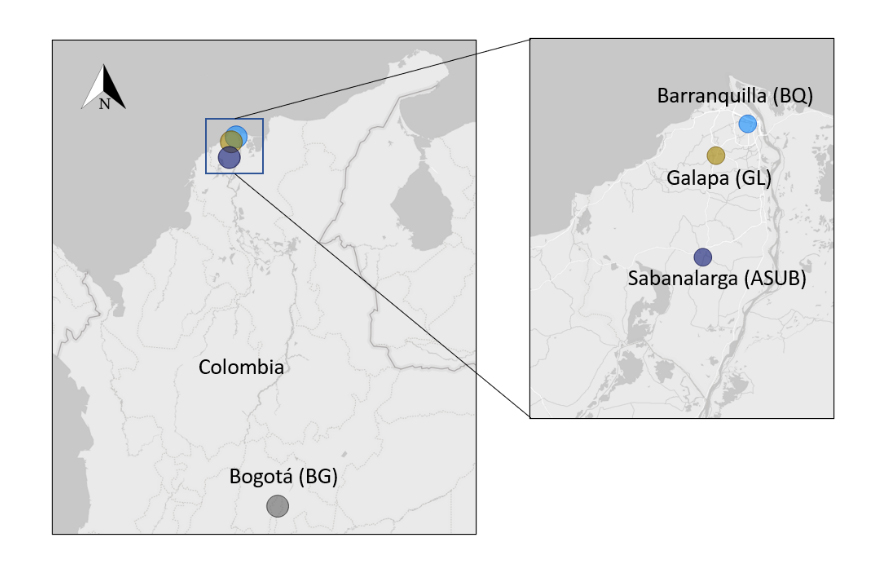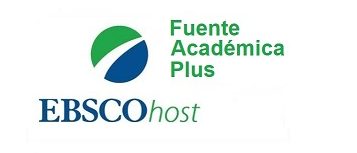Sustainable use of groundwater and rainwater in concrete construction
Keywords:
agua subterranea, agua de lluvia, agua de grifo, construcciones, resistencia a la compresion, sostenibilidadAbstract
Currently, the search for environmentally friendly alternatives in the construction industry is evident, especially in the use of water for concrete mixes. In this research, hydraulic mortar cubes were manufactured and characterized, using groundwater (ASUB), rainwater (AL-GL and AL-BG), and tap water from different cities (AG-BG and AG-GL). Previously analysed by physical and chemical tests. Likewise, the mechanical resistance of the mortars was evaluated using compression tests and they were compared against control mortar cubes prepared with drinking water (AG-BQ). The results indicated that the groundwater is suitable for the manufacture of mortars because the average resistance of the mortar cubes made with this type of water was 96.5% resistance at 7 days with respect to the sample. standard, thus being within the permissible limits according to ASTM C1602-18. The physical and chemical characterization of tap water (AG-BG, AG-GL), rainwater (AL-GL, AL-BG), and groundwater (ASUB) showed similar values in most of the physicochemical parameters measured, except for dissolved oxygen and hardness
Downloads
References
Aldabagh, I., Abed, J., Khaleel, B. & Hamah Sor, N. (2022). Influence of water quality and slag on the development of mechanical properties of self compacting mortar. Materials Today: Proceedings, 57(2), 892–897. https://doi.org/10.1016/j.matpr.2022.02.575
ASTM. (2022). ASTM C1602/C1602M-12, Standard Specifi cation for Mixing Water Used in the Production of Hydraulic Cement Concrete. ASTM. https://doi.org/10.1520/C1602_C1602M-12
ASTM. (2020). ASTM C109/C109M-02, Standard Test Method for Compressive Strength of Hydraulic Cement Mortars (Using 2-in. or [50-mm] Cube Specimens). ASTM. https://doi.org/10.1520/C0109_C0109M-02
ASTM. (2019). ASTM-C270-19ae1, Standard Specification for Mortar for Unit Masonry. ASTM. https://doi.org/10.1520/C0270-19AE01
ASTM. (2018). ASTM D7315-17, Standard Test Method for Determination of Turbidity Above 1 Turbidity Unit (TU) in Static Mode. ASTM. https://doi.org/10.1520/D7315-17
ASTM. (2003). ASTM C94/C94M-03a, Standard Specification for Ready-Mixed Concrete. ASTM. https://doi.org/10.1520/C0094_C0094M-03
Bellmann, F., Erfurt, W. & Ludwig, H-M. (2012). Field performance of concrete exposed to sulphate and low pH conditions from natural and industrial sources. Cement and Concrete Composites, 34(1), 86–93. https://doi.org/10.1016/j.cemconcomp.2011.07.009
Blanco de la Paz, E., Brown, O. & García, F. (2021). Relationship between rain and groundwater in the hydrogeological sectors of the South Basin of Ciego de Ávila. Inge CUC, 17(2), 125–132. https://repositorio.cuc.edu.co/handle/11323/10267
Burek, P., Satoh, Y., Fischer, G., Kahil, M., Scherzer, A., Tramberend, S., Nava, L., Wada, Y., Eisner, S., Flörke, M., Hanasaki, N., Magnuszewski, P., Cosgrove, B. & Wiberg, D. (2016). Water Futures and Solution. Fast Track Initiative. Final Report, WP-16-006. IIASA. http://pure.iiasa.ac.at/id/eprint/13008/1/WP-16-006.pdf
Cagua, B. y Nates, J. (2017). Influencia del Potencial Hidrógeno (pH) y la Concentración de Nitratos presentes en el Agua de Mezclado sobre el comportamiento fisico-mecánico del Hormigón: Estudio en Laboratorio [Tesis de grado, Escuela Politecnica Nacional]. BIB Digital. https://bibdigital.epn.edu.ec/handle/15000/17062
Chung, K., Wang, L., Ghannam, M., Guan, M. & Luo, J. (2020). Prediction of concrete compressive strength based on early-age effective conductivity measurement. Journal of Building Engineering, 35, 1–19. https://doi.org/10.1016/J.JOBE.2020.101998
Fernández-Jiménez, A. & Palomo, A. (2009). Properties and uses of alkali cements. Revista Ingenieria de Construccion, 24(3), 213–232. http://dx.doi.org/10.4067/S0718-50732009000300001
Gramsch, J. (2018, mayo 15). Análisis de Confiabilidad y Estimación de Probabilidad de Colapso en una Planta Industrial. Linkedin. https://www.linkedin.com/pulse/an%C3%A1lisis-de-confiabilidad-y-estimaci%C3%B3n-probabilidad-en-gramsch-labra/?originalSubdomain=es
Granados, J. (2017). Grado de Presencia del Sulfato con la Resistencia a la Compresión del Concreto, en la Ciudad de Huaraz, 2016-2017 [Tesis de grado, Universidad Nacional de Ancash]. Repositorio UNASAM. http://repositorio.unasam.edu.pe/handle/UNASAM/1959
Icontec. (2001). NTC-3459: 2001, Concretos. Agua para la elaboracion de concreto. Icontec. https://metroblock.com.co/norma-tecnica-colombiana-ntc-3459/#:~:text=El%20agua%20debe%20ser%20clara,el%20concreto%20o%20el%20refuerzo
Kim, J., Honda, D., Choi, H. & Hama, Y. (2019). Investigation of the Relationship between Compressive Strength and Hydrate Formation Behavior of Low-Temperature Cured Cement upon Addition of a Nitrite-Based Accelerator. Materials, 12(23), 1–11. https://doi.org/10.3390/ma12233936
Mekonnen, M. & Hoekstra, A. (2016). Four billion people facing severe water scarcity. Science Advances, 2(2), 1–6. https://doi.org/10.1126/sciadv.1500323
Quilla, H. y Quiroz, E. (2021). Uso del agua subterránea y agua potable para determinar la resistencia a compresión del concreto estructural, Juliaca 2021 [Tesis grado, Universidad Cesar Vallejo]. Repositorio Digital Institucional. https://repositorio.ucv.edu.pe/handle/20.500.12692/66017
República de Colombia. Ministerio de la Protección Social y Ministerio de Medio Ambiente Vivienda y Desarrollo Territorial. (2007). Resolución 2115, por medio de la cual se señalan características, instrumentos básicos y frecuencias del sistema de control y vigilancia para la calidad del agua para consumo humano. DO 46.679. http://www.minambiente.gov.co/images/GestionIntegraldelRecursoHidrico/pdf/normativa/Res_2115_de_2007.pdf
Saba, M., Quiñones-Bolaños, E. & Martínez Batista, H. (2019). Impact of environmental factors on the deterioration of the Wall of Cartagena de Indias. Journal of Cultural Heritage, 39, 305–313. https://doi.org/10.1016/J.CULHER.2019.03.001
Sánchez, D. (2001). Tecnología del Concreto y del Mortero (5 Ed.). Bhandar Editores.
Sheikh, M., Asadollahfardi, G. & Saghravani, S. (2020). Durability and morphological assessment of concrete manufactured with sewage. Construction and Building Materials, 264, 1-101–1-110. https://doi.org/10.1016/j.conbuildmat.2020.120202
Unión Europea. Consejo de la Unión Europea. (1998). Directiva 98/83/CE, relativa a la calidad de las aguas destinadas al consumo humano. Diario Oficial de las Comunidades Europeas, L 330/32. http://eur-lex.europa.eu/legal-content/ES/TXT/?uri=celex:31998L0083

Published
How to Cite
Issue
Section
License
Copyright (c) 2023 Salma Nayeth Eljaiek Martinez1, Daniel Andrés Badillo Romero, Daniel Enrique Abudinen Ordoñez, HEIDIS PATRICIA CANO CUADRO

This work is licensed under a Creative Commons Attribution-NonCommercial-NoDerivatives 4.0 International License.
CC Reconocimiento-NoComercial-SinObrasDerivadas 4.0


 English
English
 Español (España)
Español (España)






